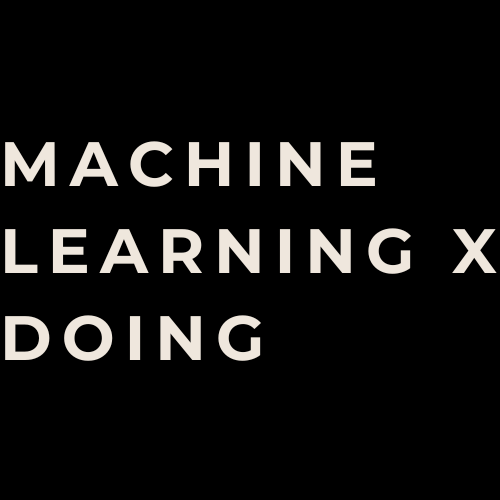The technology sector is going through some economic turbulence, and this is cause of some concern in general and of revisiting the organizational structure of the modern technology firms as we know them. Currently, the leading technology firms focus on a somewhat unique model of economic production. I will call this The Mining Model, as it has both above-ground and underground parts and data mining is a key feature. Above-ground, leading technology firms have an internal army of research scientists that provide research and development services; product designers and managers that design their products and software engineers that build and maintain their innovations. Diffused throughout this layer are business managers, directors and other leadership staff that help the firm make sound business decisions.
The second part of the Mining Model is as follows. Underneath the above-described employees lurk another layer that is less-frequently discussed. There are multiple teams of contractors whose hiring is typically outsourced to a third party. These contractors work on less-consequential aspects of the technology company. Such contractors are known to receive fewer perks than the full-time employees and significantly less pay.
This model has served the leading technology firms very well thus far, clearly. However, there are signs that this model is not optimal or sustainable over time. Long before economic shocks led to record-breaking layoffs in many cases, it was well-known that the technology sector had some of the highest attrition of full-time staff in the entire United States economy. Replacing each staff is a financially significant endeavor: most staff only work for about 2 or slightly more years in their roles. There are innovations like DevOps that help teams pick up the pieces whenever someone leaves, but these are stochastic events that are likely still very disruptive. The demand for data scientists, machine learning and software engineers and others among rivals is just impossible for any single company to monopolize, at least in the status quo environment.
Firms deal with this in different ways. Benefits and perks are very common, but have proved only to be a partial solution. Some now report former employees in their databases as having generic titles in a likely bid to reduce poaching, although the unabated pace of attrition suggests that this may have little to no effect. Replacing new team members every year means disruption to workflows and difficulties in making the big leaps needed for firms to stay at the top of their game or ward off disruptors. Excessive monitoring of staff, while perhaps helpful in minimizing leaks may also affect intrinsic motivation. Extrinsic motivation is more easily addressed with high salaries, although the reference-dependence of employees (meaning that people raise their reservation pay of what keeps them happy when faced with higher pay) that high pay is insufficient.
What if there were a complementary way to organize leading technology firms that could be done at whatever pace a firm prefers? We believe there is a clearly more efficient way that does not require a shock to the systems as they are presently constructed.
We propose flipping the Mining Model and adding special effects.
On flipping the Mining Model. We expect a role reversal of the Mining Model, where the underground aspect moves above-ground and vice-versa. We believe that in the future, employees, whether software engineers, data science experts or product designers and even people in certain leadership positions will only be allowed to work on less-sensitive products and decisions, just for the reason that they would not expected to last very long in their roles in any event. A new generation of applications will be used internally to accelerate work in many companies and we expect the best ones to foster a reorganization of many technology-driven organizations.
On the other hand, we see leading technology firms developing long-term partnerships with this new generation of technology firms, where growing proportions of their long-term vision can be generated and executed over the agreed-upon medium-to-long-term period. This, however, requires partnering companies that are flexible and can work across the board as far as the needs of leading technology firms are concerned. We are the first and only firm in our class.
On Adding Special Effects. We rather think of this as being akin to special effects firms that work with motion picture studio firms. We are pioneering a new generation of tools that take the technology sector to the next level. These are not superficial special effects, but causal impacts that provoke change.
In some ways, products are analogical to the environment in the motion capture, performance capture and special effects industries, and other virtual production companies that co-create the vision of motion studio partners across their entire industry with clearly-understood boundaries that provide win-win outcomes. We we expect this shift to especially be relevant as firms become more virtual-focused and more metaverse-oriented.
We hasten to note that the information in this note is not sufficient to execute the agenda in its entirety and is only intended to initiate a discussion. We fully expect perspectives to evolve over time. Trust will be critical for such partnerships to bloom and some technology firms desire to only gradually transition to the vision we are describing. Others are more bold and prefer to be decisive. Ultimately, however, we think all will agree that the current model is unsustainable in light of the economic reality.
To understand the technology industry is to understand academia and specifically, research-focused universities and institutions around the world that were originally inspired by German academia in the 19th Century. The mining model framework of the tech sector is to some extent clearly inspired by academia’s tenure phenomenon, where faculty research scientists have the possibility of staying with a university for the entirety of their career and build labs with staff below them that have varying degrees of tenure. It works for campuses because universities in any given field agree to respect tenure granted in one campus to be equivalent to tenure granted in their own university, assuming that they are peer institutions. The demand for faculty is any given field is not nearly as high in the same vein, as education is decoupled from research in academia in a way that is not the case for products and research and development in technology firms.
One sees this similarity in well-defined roles in how an Level 5 employee in one tech firm may receive the same compensation and perform role in a rival firm. This outcome is not unlike how an Associate Professor of economics in one department would receive the same outcome if they move laterally to a similar department for example. However, even though tech recruitment across levels is often a mere formality to the same extent, industry as it currently exists is not in a position to grant tenure to its employees, and the incentives are such that attrition is high. As such, the industry adopts a short-term mindset that makes it more reactionary than proactive.
That is where Machine Learning X Doing comes in with the Insight Store and other exciting new innovations.

